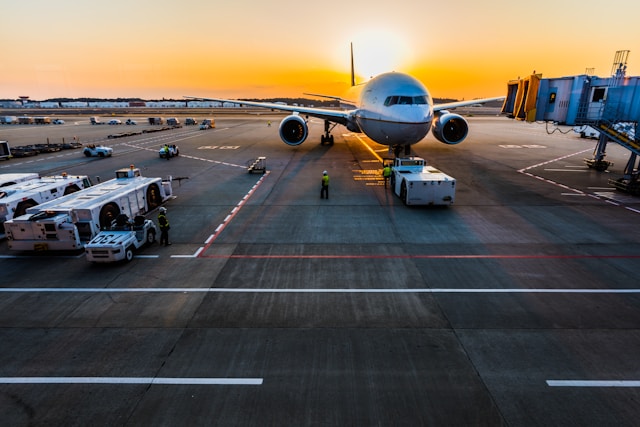Revealed: The Top 5 Worst Airports in Canada for Flight Delays
UNITED KINGDOM / AGILITYPR.NEWS / January 14, 2025 / Flight delays and cancellations are among the most frustrating experiences for travelers, impacting schedules and connections. In Canada, while several airports boast efficient operations, others struggle to maintain punctuality and reliability. Large, busy ones are particularly liable to this. But which are the worst offenders?
A detailed new research study, conducted by Casino of the Kings, has revealed the top five worst airports in Canada for cancellations and delays. The research takes into account factors like delay index, average delay duration, and cancellation index to judge which airports to avoid if possible.
1. Calgary International Airport (YYC): The Worst Performer
With 18.5 million passengers in 2023, Calgary International Airport is one of the busiest airports in Canada. Unfortunately, it is also the clear frontrunner for the worst airport in Canada for flight delays. With a delay index of 33%, an average delay duration of 40 minutes - by far the highest of all airports analyzed - and a cancellation index of 0.93%, YYC’s metrics position it well ahead of its peers in negative performance.
Travelers passing through Calgary frequently report prolonged wait times and disrupted schedules - surely the result of having to manage peak hours and inclement weather, which are common in the region. Despite Calgary’s importance as a hub for domestic and international connections, the persistent delays tarnish its reputation, making it the least desirable option for time-sensitive travelers.
2. Kelowna International Airport
Kelowna International Airport ranks second among Canada’s worst airports for flight delays. Although smaller in scale compared to major hubs, Kelowna’s performance places it second worst in our ranking. Its delay index of 24%, average delay of 29 minutes, and cancellation index of 0.88% are a sign of chronic reliability issues that disproportionately affect passengers in this region.
The high cancellation index is a particular sore point, with disruptions frequently attributed to weather conditions and limited operational capacity. This has a clear negative impact on passengers, who often face limited alternative flight options. While the airport’s scenic location and importance to British Columbia’s tourism are worthy of note, its operational inefficiencies hinder its potential as a reliable gateway for visitors looking to take in the region’s stunning sights.
3. Halifax Stanfield International Airport
Halifax Stanfield International Airport secures the third position on this list, with a delay index of 27%, an average delay of 32 minutes, and a cancellation index of 0.67%. As the primary airport serving Canada’s Atlantic provinces, Halifax plays a crucial role in connecting the region to the rest of the country and international destinations. However, operational inefficiencies and external factors limit its performance.
One of Halifax’s recurring challenges is admittedly out of the operators’ hands: the weather. Its exposure to Atlantic weather systems, which frequently disrupt schedules. Additionally, the airport’s reliance on fewer airlines and routes can create bottlenecks during peak travel seasons. While its delayed averages are slightly better than Calgary’s and Kelowna’s, the combined effect of its metrics places Halifax as a consistent source of frustration for travelers. Still, if the alternative to a delay is flying in unsafe weather, it’s always better safe than sorry!
4. Edmonton International Airport: Consistency Issues
Edmonton International Airport ranks fourth, with a delay index of 29%, an average delay of 35 minutes, and a cancellation index of 0.50%. As a major hub in western Canada, Edmonton handles a mix of domestic, international, and cargo traffic; it is therefore an extremely important travel hub for the region.
Edmonton’s delay averages, though not the worst, are concerning for passengers with tight schedules or connections. Seasonal weather challenges and higher passenger volumes during holidays further exacerbate delays. Despite ongoing investments in infrastructure and technology, Edmonton struggles to keep pace with rising demand and operational expectations.
5. Toronto Pearson International Airport: Canada’s Busiest, Yet Troubled
Toronto Pearson International Airport rounds out the top (or bottom?) five, with a delay index of 28%, an average delay of 34 minutes, and a cancellation index of 0.53%. As the busiest airport in Canada and one of the largest in North America, Pearson faces immense pressure to manage high passenger volumes and complex air traffic flows.
While its infrastructure is state-of-the-art, Toronto Pearson’s operational challenges stem from the sheer scale of its operations. Weather disruptions, air traffic congestion, and security processing bottlenecks contribute to creating negative knock-on effects and, of course, delays. The airport’s cancellation index, though moderate compared to other airports on this list, is an example of the hub’s struggles in accommodating disruptions during peak periods. Travelers appreciate its connectivity, and the quality of services offered but lament the frequent delays.

Contacts